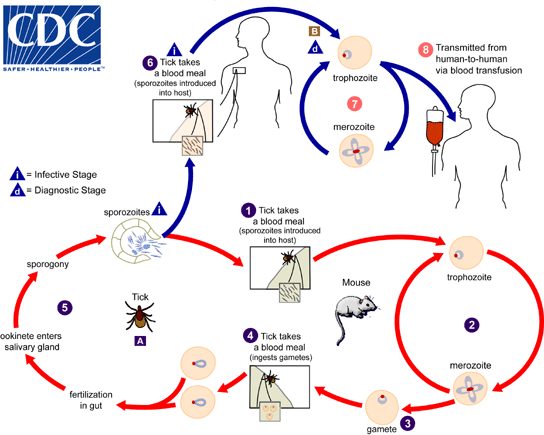Connecticut
Related: About this forumMore ticks carrying babesiosis parasite, raising risk of serious illness
Before last month, 73-year-old Albert Patalano had never heard of babesiosis.
Now, he’s eager to let others know about this dangerous tick-borne illness — not as common as Lyme disease, but potentially far more serious.
“People should be aware,” the Waterford resident said Friday, now well on his way to full recovery after a near-fatal bout with the infection that began in mid-July.
Randall Nelson, chief epidemiologist for the state Department of Public Health, noted that while the number of babesiosis cases statewide has fluctuated from year to year, the decadelong trend shows an increase.
http://www.theday.com/local/20150828/more-ticks-carrying-babesiosis-parasite-raising-risk-of-serious-illness--
TexasProgresive
(12,445 posts)Our tick population (Texas) has radically declined, some give credit to the imported red fire ant.
http://www.cdc.gov/parasites/babesiosis/biology.html

The Babesia microti life cycle involves two hosts, which include a rodent, primarily the white-footed mouse, Peromyscus leucopus, and a tick in the genus Ixodes. During a blood meal, a Babesia-infected tick introduces sporozoites into the mouse host The number 1. Sporozoites enter erythrocytes and undergo asexual reproduction (budding) The number 2. In the blood, some parasites differentiate into male and female gametes, although these cannot be distinguished by light microscopy The number 3. The definitive host is the tick. Once ingested by an appropriate tick The number 4, gametes unite and undergo a sporogonic cycle resulting in sporozoites The number 5. Transovarial transmission (also known as vertical, or hereditary, transmission) has been documented for "large" Babesia species but not for the "small" Babesia, such as B. microti The letter A.
Humans enter the cycle when bitten by infected ticks. During a blood meal, a Babesia-infected tick introduces sporozoites into the human host The number 6. Sporozoites enter erythrocytes The letter B and undergo asexual replication (budding) The number 7. Multiplication of the blood-stage parasites is responsible for the clinical manifestations of the disease. Humans usually are dead-end hosts. However, human-to-human transmission is well recognized to occur via contaminated blood transfusions The number 8.
Life cycle image and information courtesy of DPDx
NutmegYankee
(16,406 posts)I live in a major tick borne disease area. I'm just miles from Lyme, CT where Lyme disease was discovered and named.